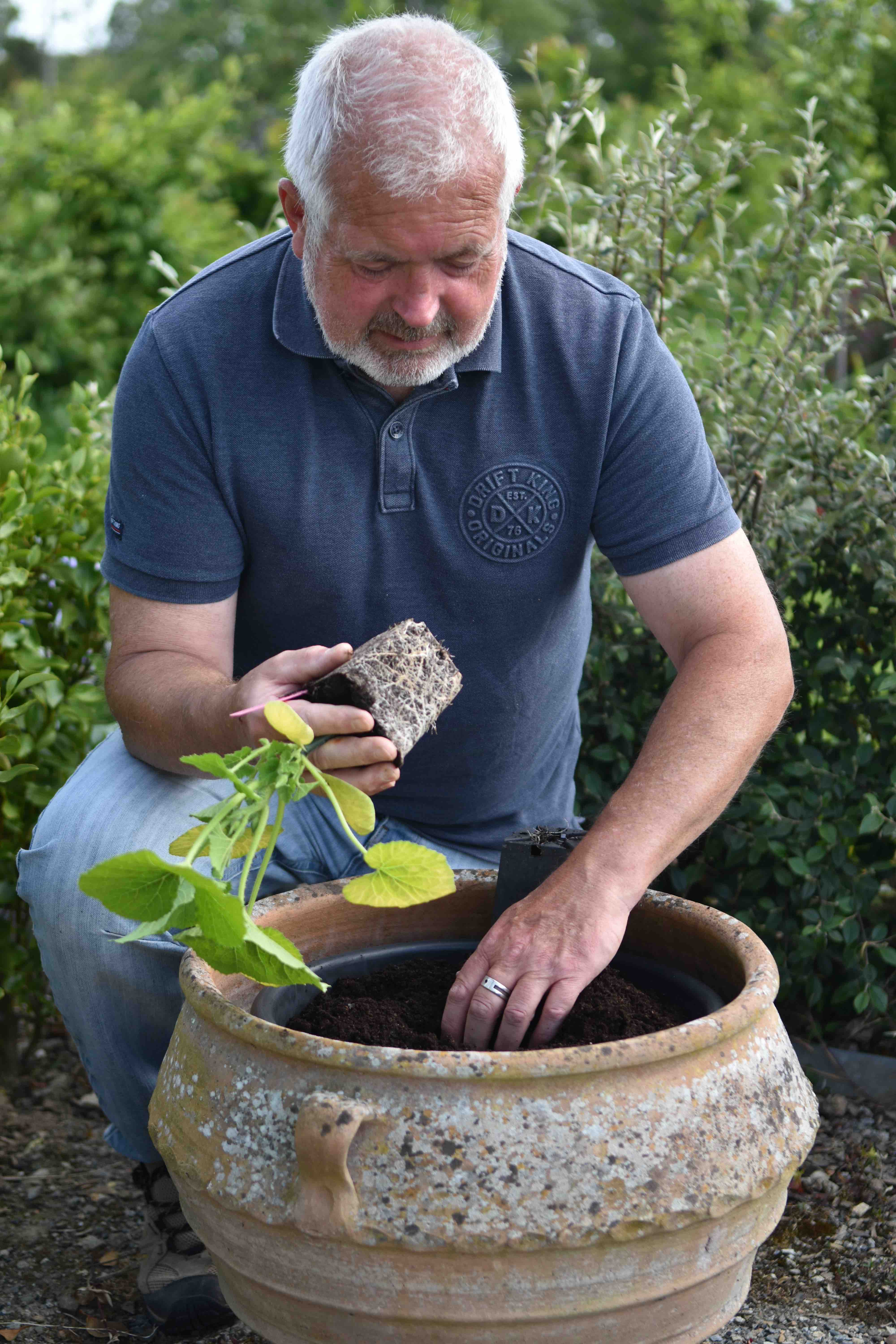
Even if you don’t have much of a garden you can grow some tasty veg in containers. A sunny patio area can be very productive and definitely add to your healthy diet even though you won’t be self-sufficient. You may even save some money, but the main benefit is the fresh food and sense of achievement.
But before I get started on growing veg, despite the cold weather at the moment, there were moments of sun during the week and the tulips had their moment in the sun.
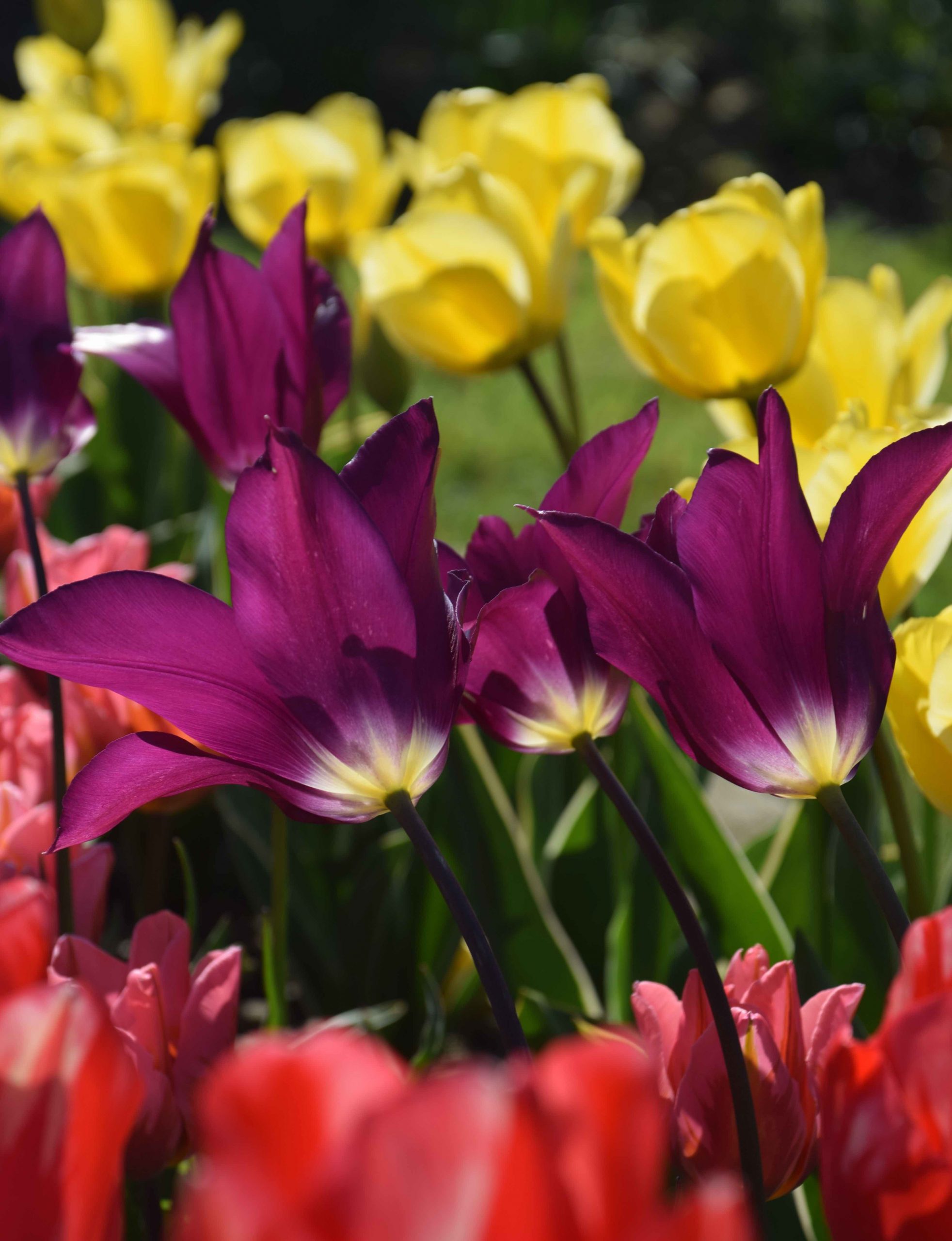
And the tulips and wallflowers are colourful and fragrant. Just a reminder that although planting bulbs in autumn is a bit of an effort, the work is well rewarded. You can see more tulips on my personal blog.
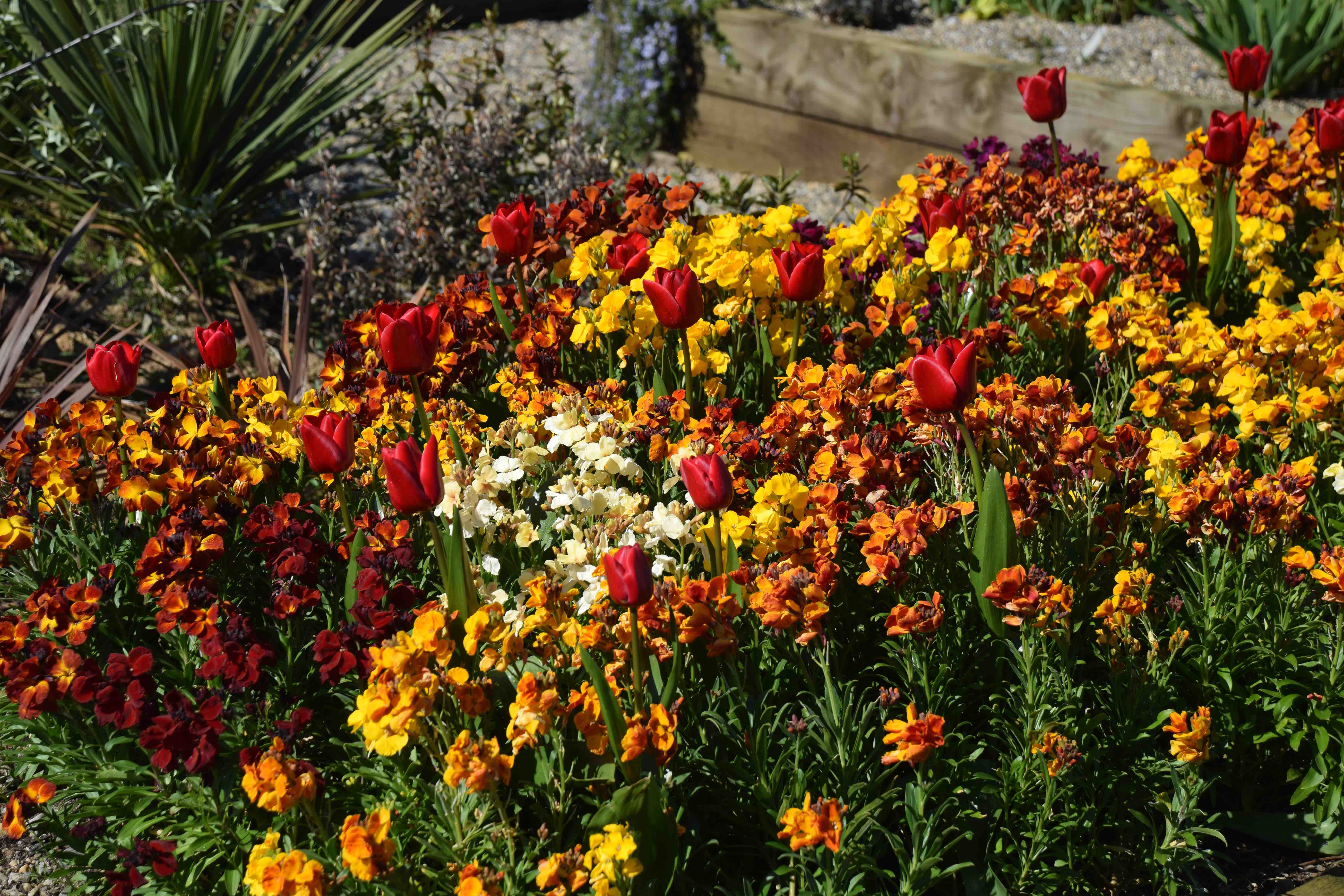
But before we get into the details of growing veg, I just want to mention that when plants are in containers they need regular and frequent watering. You can’t just plant and forget or go on holiday for a fortnight in August and expect your plants to thrive. Plants in pots need lots of water and their needs increase as the plants get bigger. Provided you take that into account there is no reason why you can’t have great success.
So before we discuss the types of crops you can plant, we need to mention the containers and the compost.
You can use any container but it must have drainage holes in the bottom to allow excess water to drain away. A 30cm deep and wide pot is ideal for a wide range of plants and will be big enough for a tomato plant or a courgette. ‘Rolled-down’ compost bags make ideal, free containers. Avoid very small containers such as old tin cans because they will dry out really fast. Because watering is going to be a daily job, group your containers to make watering quicker and easier. Quick-growing crops that are short in stature don’t need a very deep container and you can use growing bags or even bags of compost with the tops cut out.
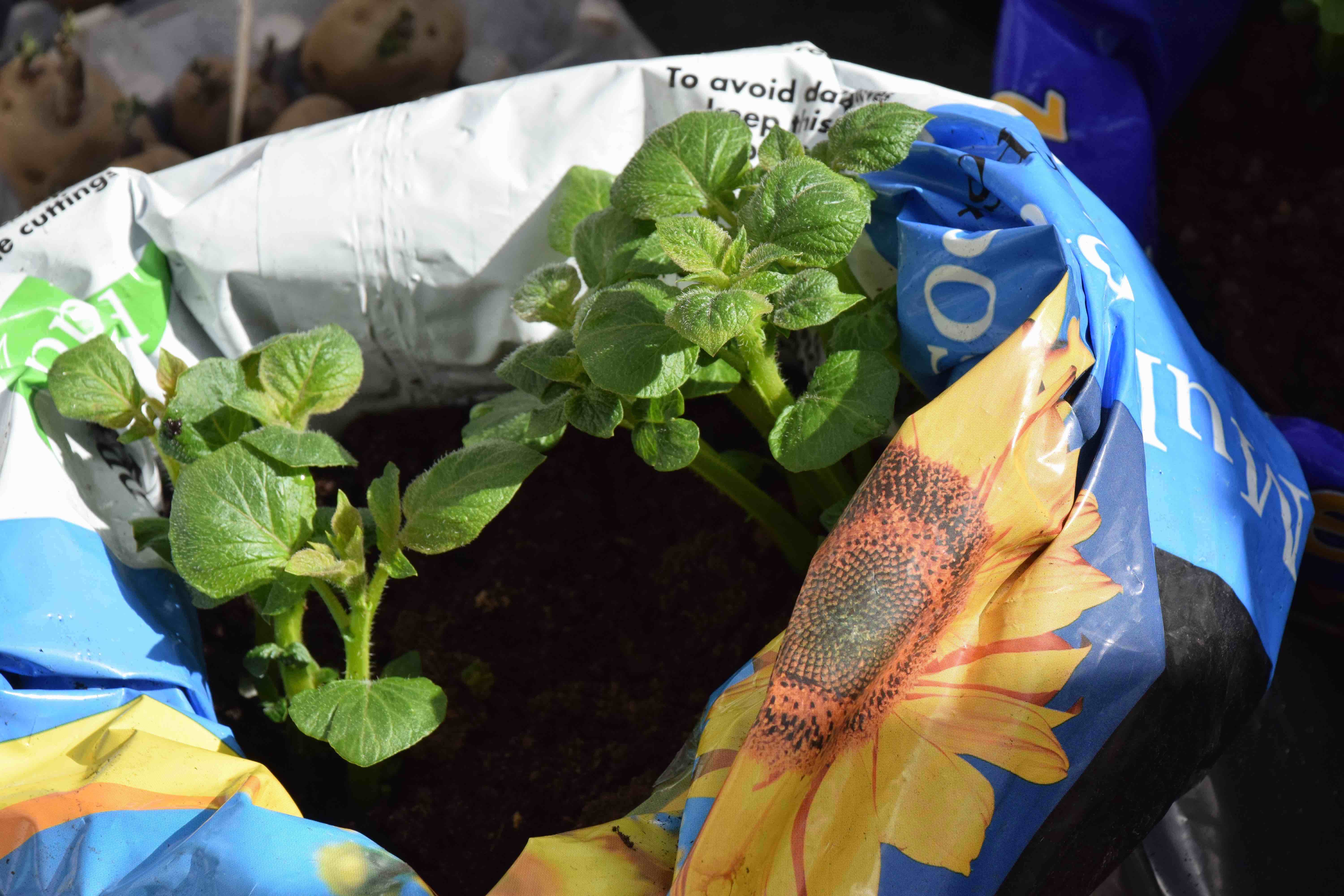
Multipurpose compost is suitable for all veg in containers. It does not contain enough nutrients to sustain the crop all summer so you will need to feed the plants too. A liquid fertiliser is easy to use and can be applied once a week as you water. A general fertiliser is good for all plants or you can use a tomato fertiliser. A fertiliser that contains seaweed is also good but avoid ‘seaweed tonics’ which do not contain many nutrients – look for the NPK ratio on the pack and the word ‘fertiliser’ or ‘feed’ to be sure the product actually contains necessary nutrients and not just seaweed.
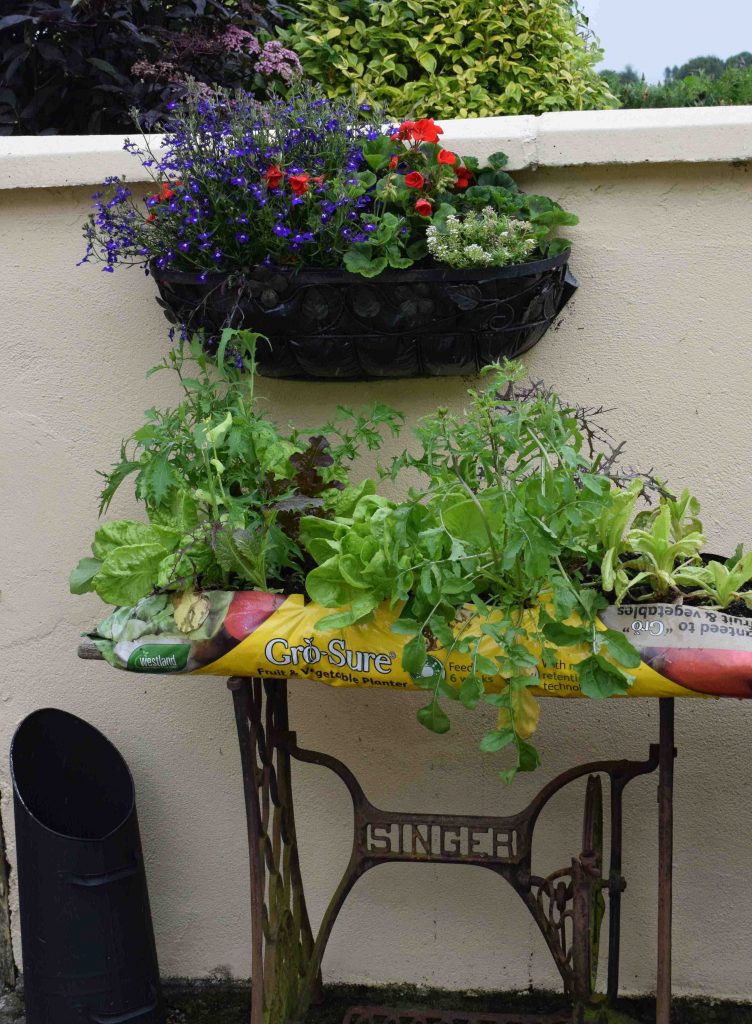
What to grow in your pots
I always suggest that you grow things you like to eat. And then grow things that are either expensive to buy, are unusual or that don’t travel well. But the most important thing is that you like to eat them. My recommendations are:
Peas
If you like raw peas then these are easy to grow in a large pot. The plants (even dwarf kinds) are sprawling and scruffy and tall kinds need support. Regular peas crop over a short period but I grow mangetout peas which crop for slightly longer. The new shoots of all peas can be harvested for salads.
French beans
There are dwarf and climbing kinds. Dwarf beans are quicker to crop but have a shorter harvesting period. I grow them because they crop heavily and are easy to pick and prepare in the kitchen. If you grow them you can avoid tough, stringy beans in packs and avoid lots of air miles and plastic.
Carrots
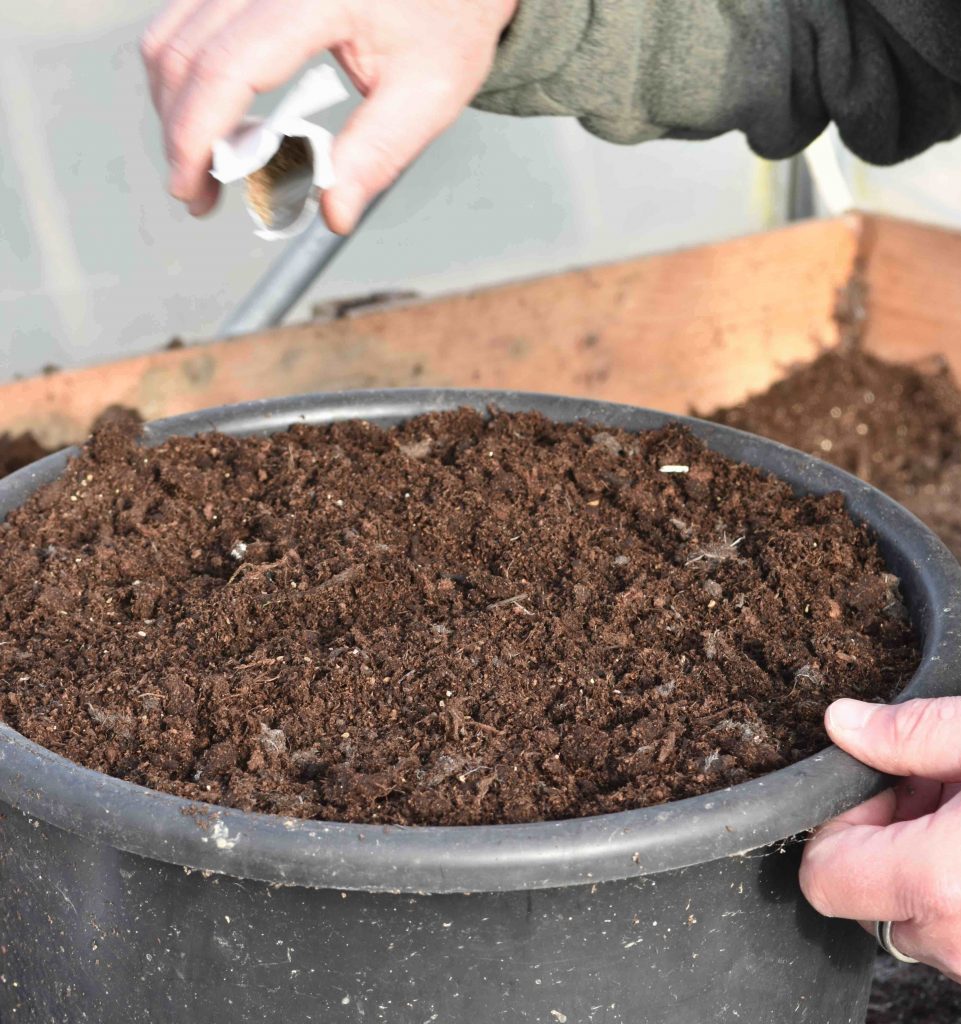
Carrots don’t suit all soil types but are relatively easy, if a little slow, in pots. You can grow round-rooted carrots in shallow pots (though I find them annoying to prepare) and any except very long carrots can be grown in a pot 30cm deep. Fresh carrots are so much better than the huge, washed things in bags that are fit only for horses.
Radishes
I don’t eat a lot of radishes but they are easy to grow. The roots develop really quickly. Buy a pack of mixed radish to spread the maturity times.
Salad leaves
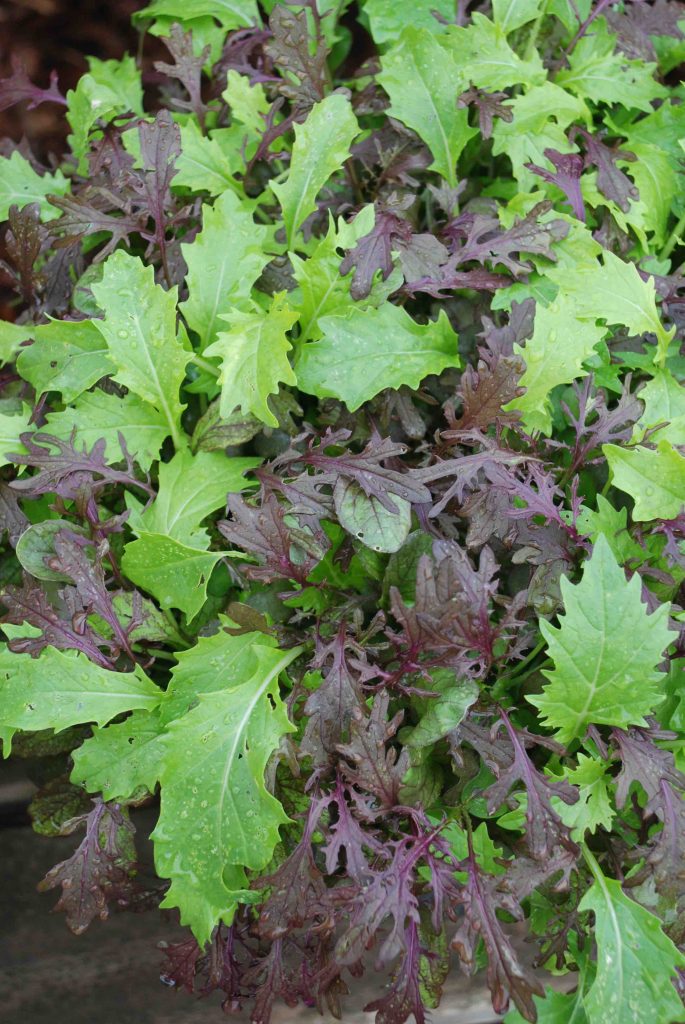
These are the best of all crops to grow. Either choose mixed lettuce or a mix of different leaves. Scatter the seeds over the compost, lightly rake over with your fingers, water well and you will have some leaves to pick within six weeks. You can keep coming back for more for many more weeks.
Tomatoes
I mentioned these a few weeks back and they are ideal for a sunny patio. Choose bush types for ease of growth, ideal for window boxes.
Herbs
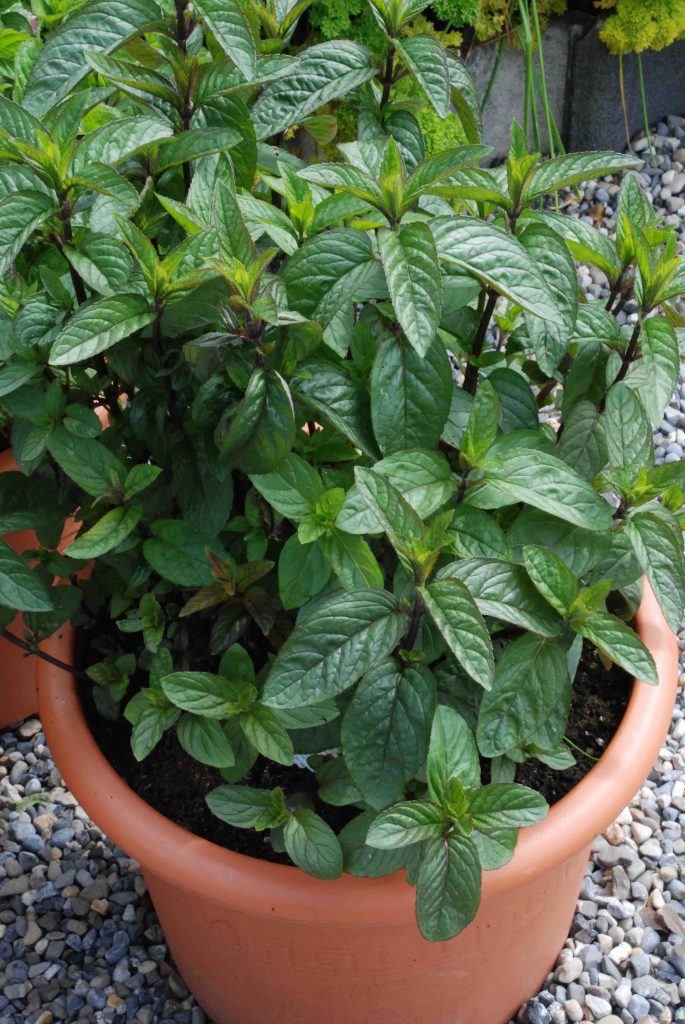
Most herbs will grow well in pots. Mint is invasive in the garden so is best restricted to a pot but replant every spring to maintain vigour. Parsley is another essential that will grow in pots and the frilly leaves are beautiful too. Basil needs a warm, sunny spot. Annual like chervil and coriander need sowing every few month because they are short-lived.
Courgettes
Bold and beautiful, courgette plants are attractive and productive and their flowers attract bees. Keep them well watered and fed and pick the courgettes when they are small.
There are lots more you can can grow in pots. Just give it a go.
Weekly reminders
Sow hardy annuals in borders where they are to bloom
Deadhead spring bulbs such as daffodils and tulips but let the foliage develop
protect hostas and other plants from slugs and snails
Put new pond plants in ponds
Plant gladioli
Harden off tender plants, to get them acclimatised to outside conditions but protect them from frost
Plant hanging baskets and patio pots but protect from frost